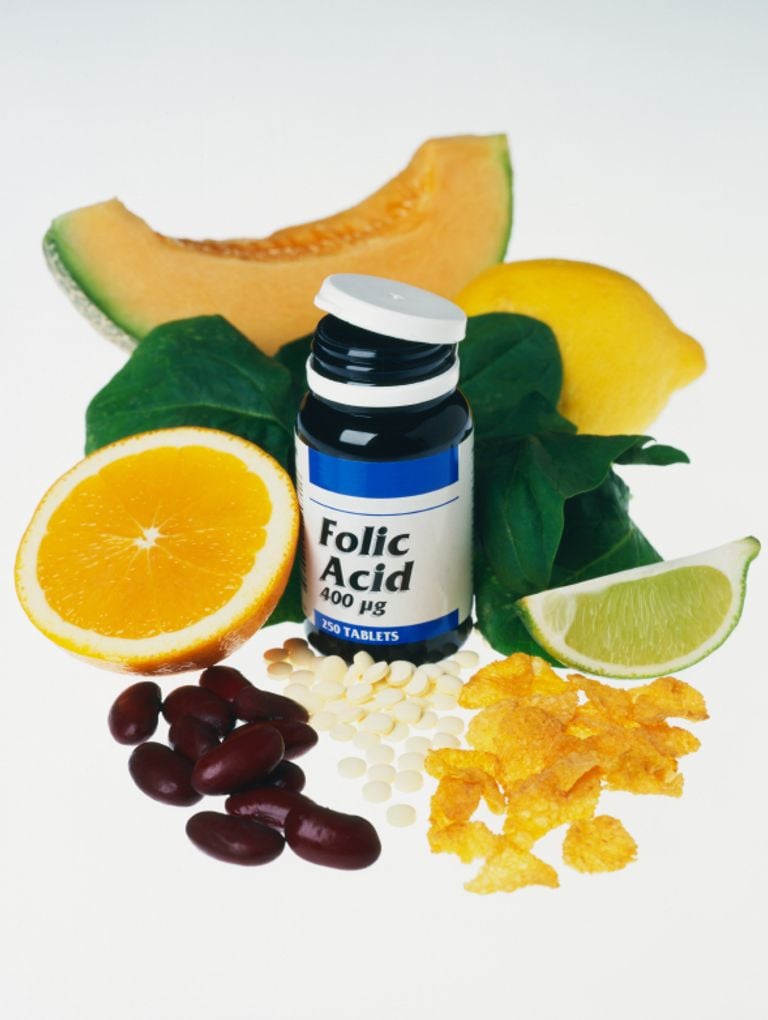Folic acid update
By Michele Holcomb
Updated May 10, 2019
You’ve decided to have a baby! No doubt you have been inundated with a lot of advice, including about folic acid. But what is this wonder nutrient all about? Folic acid is a critical supplement that aids in your baby’s healthy development. Read on to help your unborn child get the best start in life.
What is folic acid?
Folic acid is a B vitamin, B9, found in vitamin supplements and fortified foods. Folate, or folacin, is the natural form of the vitamin found in foods, such as broccoli, bananas and orange juice. Folate is less readily absorbed by the body (50%) than its synthetic counterpart (85% to 95%).
Why is it necessary?
Among its many important functions, folic acid works in tandem with vitamin B12 to build and maintain healthy red blood cells. This is especially true during pregnancy when cell growth is rapid. It is also vital to the development of a fetus’ brain, skull and spine during the first month of pregnancy since neural tube defects occur 25 to 29 days after conception, according to The Hospital for Sick Children.
NTDs occur when the neural tube, which forms the brain and spinal cord, does not close properly during the earliest stage of pregnancy, often when the mother does not even realize she is pregnant, causing brain, skull and spine abnormalities. Health Canada reports that approximately 260 newborns a year are afflicted with an NTD.
According to the International Federation for Spina Bifida and Hydrocephalus, spina bifida is one of the most widespread NTDs. In its most severe form, it causes paralysis and problems with bladder and bowel control. Another serious developmental condition associated with insufficient folic acid is anencephaly, says the National Institute of Neurological Disorders and Stroke, in which the brain partially develops or fails to develop and the brain tissue is not covered by bone. Anencephalic pregnancies often result in miscarriage or the infant dies shortly after birth.
Women of childbearing age who have a family history of NTDs, are diabetic, epileptic or obese, run a higher risk of having a child who develops a congenital abnormality. They may be prescribed a higher dose of folic acid — the Society of Obstetricians and Gynaecologists of Canada (SOGC) advises a range of 4 to 5 mg per day, depending on the individual — and should consult their physician before planning a pregnancy.
How much do you need?
Because every pregnant woman is at risk of carrying a baby with neural tube defects, it is essential that she take a prenatal vitamin containing 0.4 to 1 mg folic acid every day as recommended by the SOGC. This should be taken at least three months before conception and throughout the pregnancy to help protect an unborn baby against serious birth defects. The supplement helps reduce cases of neural tube defects by up to 70% if it’s taken during the preconception period, reports Folic Acid Alliance Ontario (FAOO).
Folic acid is water soluble, meaning unused amounts are regularly excreted by the body through urination rather than stored. This is why it is necessary for pregnant women or those intending to become pregnant to take folic acid daily.
A well-balanced diet
Taking a folic acid supplement does not replace a healthy diet, nor does eating a folate-rich diet completely satisfy the folic acid requirements. Read Health Canada’s Nutrition for a Healthy Pregnancy – National Guidelines for the Childbearing Years to learn about their dietary recommendations for expectant mothers.
Some good food sources of folate
• avocado • blackberries • cantaloupe • grapefruit • oranges • papaya • pineapple juice • raspberries • strawberries • tomato juice • asparagus • carrots • corn • green beans • lima beans • peas • romaine lettuce • spinach • sweet potato • beef liver • fava, kidney, lima, pinto, romano, soy and white beans • wheat germ • chickpeas • peanuts and walnuts • eggs • milk
FAAO encourages proper food-handling to retain the nutritional benefits of folate, which can quickly be lost during meal preparation:
• Cook food in a small amount of water for a short time • Minimize how much you peel and cut fruits and vegetables (folic acid is also found in the skins of fruits of vegetables) • Refrigerate unused food in air-tight containers.
Mandatory food fortification
The Government of Canada implemented a mandatory folic acid food fortification program in 1998. Since the late 1990s, white flour, pasta and cornmeal have been enriched with B9 to combat neural tube defects in babies. Although it’s not compulsory, most rice and breakfast cereal brands have also been fortified. The Canadian population receives an estimated 0.1 to 0.2 mg of folic acid as a result. The Public Health Agency of Canada reports that the increased fortification levels successfully lead to a decline in the number of birth defects. “A seven-province study showed a reduction of 46% in the overall rates of NTDs, including live births, stillbirths and cases detected prenatally in pregnancies that were subsequently terminated.”
Weekly Newsletter
Keep up with your baby's development, get the latest parenting content and receive special offers from our partners